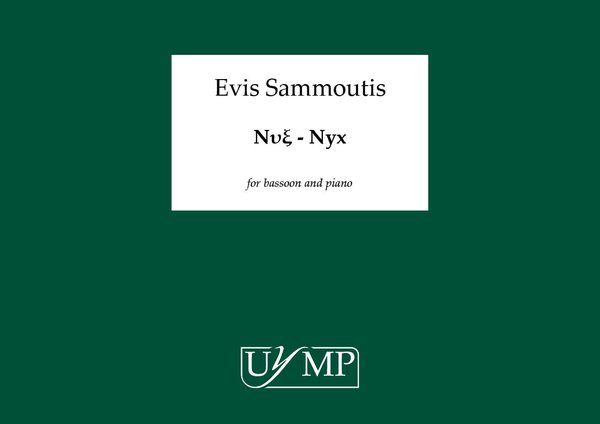Νυξ - Nyx in Ancient Greek means “Night”. Nyx was the Greek goddess of night and darkness and mother of several anthropomorphic gods such as Hypnos (sleep), Thanatos (death), Oneiroi / Morpheus (dreams), Hemera (day) and Geras (old age). The concept for this composition took shape when my daughter, my first child, was born as I was sketching the work. I could then only work at night and, in fact, composed the whole work almost exclusively at night or through the night. The composition was inspired not only by the goddess but also by the qualities associated with some of her children. For example, Thanatos is represented with piano belllike harmonics, and Hemera, with the sudden burst of light in the final section of the piece. I also make a reference to my daughter in the final section, using the “music box” qualities of the piano’s top register.
Another interesting aspect is that Nix (spelled with i) is used in modern terms to indicate a natural satellite of planet Pluto. This principle is transferred in my compositional treatise and applies to the role and function of the two instruments, one becoming a satellite of the other with the musical material gravitating between the two. This idea of duality influenced several compositional choices: there are two main sections with two interludes framed by an introduction and an epilogue. The interludes are not only used as connecting bridges but also as a chance to showcase the pianist’s virtuosity, making this a more equal partnership. The composition was commissioned to serve as a test piece for a competition, and this aspect also influenced some of my choices: I make use of the full register and dynamic control of the instrument, pushing it, in many cases, to the limit but always with the goal of serving a deeper musical scope. I also employ several typical, traditional features combined with a rather extended technical palette and articulation. When Stravinsky wrote the most famous bassoon orchestral solo in the repertoire, he made sure that part of its identity was the very first starting note: a shockingly high top C sets off the Rite of Spring. I start Nyx with the top C of the piano and the low C of the bassoon, but I too use the high register of the instrument rather extensively, including a top G. Nyx is dedicated to Bence Boganyi, who I first met as the bassoonist of Quintett Chantily, the group that eventually won the prize for the best interpretation of my wind quintet during the 2006 ARD Competition. I worked with him very closely throughout the compositional stages of this work, starting with the sketching process in Berlin and culminating in our final meeting in Munich after the work was finished. Special thanks also to bassoonists Johannes Schwarz and Philipp Zeller.

